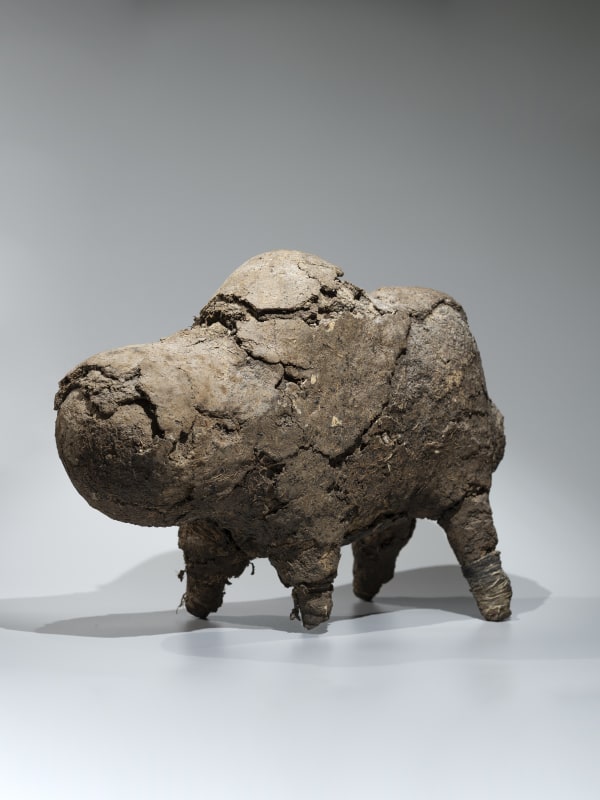"Antique African sculptures that embody cultural values or a connection to the spiritual realm or world of the ancestors."
A “manifestation” can be defined as the embodiment of something theoretical, an abstract idea made tangible. It is a demonstration that something exits. The word originates from the Latin manifestatio, “to make palpable”, referring to both the act of becoming manifest as the embodiment of the intangible itself. With this catalog Duende Art Projects presents five such manifestations – antique African sculptures that embody cultural values or a connection to the spiritual realm or world of the ancestors. The exhibition’s title ‘Manifestations’ was chosen specifically as the word refers both to the action as to the vessel for that action. These five artworks can be enjoyed because of their aesthetic appeal, but without any knowledge of their original ritual context, layers of deeper appreciation remain unappreciated. Duende Art Projects reveals what these sculptures once expressed, and in which performances they formed a focal point. These sculptures once had an active ritual life, manifesting ideas while also being the manifestation itself - the act and the result in one. Two grave markers, one from the Kenya’s Giryama peoples, the other from Tanzania’s Zaramo culture, manifest the continued presence of the ancestors within the community. A Fon bocio power figure embodied the powers of Sakpata, the god of the earth, thus making them accessible for the community’s benefit. This relation was reciprocal, and just as the grave markers the wooden statue received frequent sacrifices and libations to appease the ambivalent spirits. A Pende roof finial announced the sacred forces that housed in the chiefly abode, and the political and spiritual powers of his first wife. Lastly, a boli altar figure from Mali manifested the forces that animate the universe, the many layers of its surface being a testament of its active ritual agency. In our Antwerp gallery, these five antique sculptures are presented in juxtaposition with contemporary paintings by the artist Mostaff Muchawaya (b. 1981). The Zimbabwean painter commemorates the landscapes of his youth and the women in his life in his unique expressionist style. Just as the wear and erosion of the five sculptures, Muchawaya scrapes off the paint of his canvas to express the fading of his cherished memories. The textured surfaces of his paintings, applied with found materials and bits of other canvases, are alike the sacrificial layers on the antique ritual power objects. Through his paintings, Muchawaya manifests his longing to his roots. The process is important to the artist, and almost like a ritual. Just as the sculptures his works are assemblages with an innate palpable power. Antique and contemporary astonishingly blend across space and time; art as a timeless expression of the intangible.
